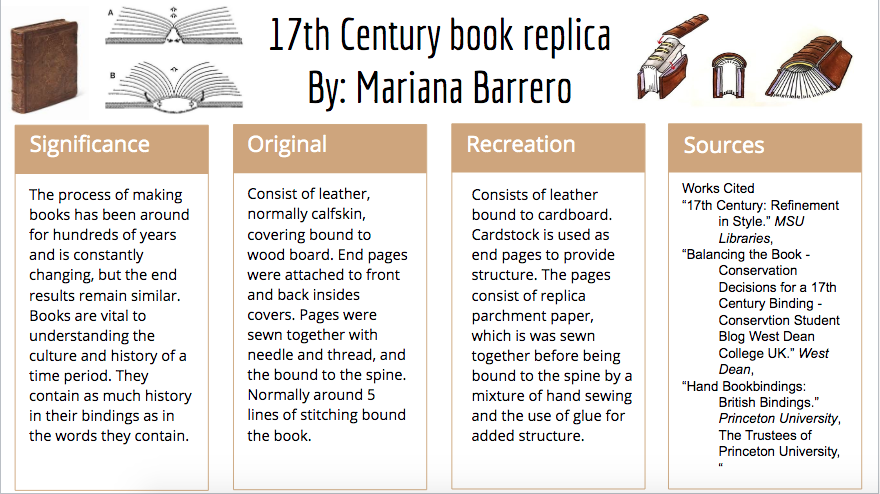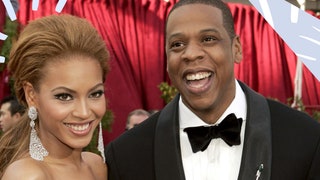
Claes Osenburg, a Swedish-born American sculpturer, was most well-known for his public art installations. These typically feature large soft sculpture versions of everyday objects. These sculptures often provide commentary on how people interact in the world. Millions of people annually view Oldenburg’s works.
Influences
Claes Oldenburg was influenced greatly by street life. He saw that elements from street life could make excellent sculptural subjects. Oldenburg began to experiment using different media like painting, sculpting and other mediums. He became involved in happenings, which were participatory art experiences with a purpose. He was also inspired by theater, and incorporated that into his work.
Oldenburg's first sculptures are reminiscent in many ways of Abstract Expressionism. But they also have a distinct conceptual point. Oldenburg was interested and able to see similarities between images. Oldenburg's relationships to his prototypes were not literal, but rather associative, and they heightened the objects' power as contemporary totems. Oldenburg was also fascinated by mutability, as were contemporary artists Stella and Morris. Ron Davis is another young abstract artist who took inspiration from the idea mutability.

Style
Claes Oldenburg's style was influenced by his upbringing in New York City, where he became an active member of the artistic community at a young age. As an assistant at Cooper Union Museum, he learned the history of art and created his own style. Oldenburg's early work was influenced greatly by his interactions and friendships with other artists, particularly the abstract expressionist school. Red Grooms, Allan Kaprows, Jim Dine, Robert Whitman were some of his influences.
Oldenburg's work combines ironic satire about consumer products with precise construction details. His monumental sculptures are well-known for his ability to master scales and proportions. His works include the upside-down ice cream cone, Cupid's Span, the Batcolumn, and Flying Pins, which were installed in cities across the world. Oldenburg did large-scale public works as well as sculptures.
Life-size sculptures
Oldenburg's work combines rigorous construction details and satire of consumer products in life-size sculptures. His ability to master the proportions of massive scales was also something that Oldenburg was well-known for. Oldenburg was also responsible for the iconic sculptures Upside-Down in Cologne and Flying Pins In Eindhoven. The first is a large piece that sits in the middle Cologne harbor. The latter is an interactive sculpture which collides with a corner of a shopping mall roof. Other public works by Oldenburg include Dropped Cone in Philadelphia and Batcolumn in Chicago. Although he is based primarily in New York City the artist also works abroad.
Oldenburg married Coosje van Bruggen in 1977. They worked together many years on massive polychrome sculptures. Van Bruggen handled the logistical aspects of the projects and helped Oldenburg with his sketches. Oldenburg concentrated on his larger-scale sculptures, such as public monuments. Their collaboration evokes JeanClaude's relationship with Christo.

Technique
Oldenburg uses objects as his starting point, altering their forms, substances and states to create an ambiguous sense and time. He often turns objects into works of art in their own right, such as a tea bag turned into a painting into a sculpture. His works have a similarity to Pollock's drip paintings, and tend to minimize the importance of composition. As a child of a Swedish diplomat, Oldenburg was raised in Chicago.
Oldenburg's artistic imagination enables him to re-link seemingly unrelated objects by creating formal analogies. He wanted to move beyond the static view of daily life and use perception as a platform for the creative. Oldenburg's perspective on perception is similar that of Surrealism which recognizes interrelationships between images and percept.
FAQ
Why is pop music so popular?
Pop music is very popular because it's fun! It makes you feel happy and gives you a great sense of freedom. People listen to pop music, and they are free to think about other things than themselves. They don’t have to worry what other people think. Pop music is so beloved because of this. People enjoy songs that make their heart sing. If you're feeling down, you can always turn on the radio and hear some upbeat tunes. You may even find yourself singing along. Pop music has been so popular over the years because of this.
Is Tik Tok pop culture?
The answer is yes! It's not just for teenagers anymore. These short videos can be shared with friends and family to share their emotions, thoughts, and life moments.
The app is used daily by more than 200 million people around the globe. This number is growing by millions every day.
TikTok offers brands a unique opportunity to connect with consumers and establish meaningful relationships.
Many influencers have established huge followings on TikTok. These creators create original content and engage audiences around the world.
So what are you waiting for? If you want to take advantage of this trend, here are four ways to do it.
-
Make viral content
-
Engage Influencers
-
Use Visuals Effectively
-
Get creative with your audience
What is pop culture?
Pop culture is all around. It is everywhere: TV, radios, films, music, magazines and newspapers, websites, social media, etc. It is everywhere we go, 24/7. Pop culture influences everything, from clothes to music and language to politics and religion. What is pop culture exactly? Wikipedia says that popular culture, or popular culture, refers only to ideas and products designed to be mass-produced in society. Many people think that this term applies to television shows, movies, music, fashion, and other forms of entertainment. Pop culture encompasses much more than entertainment. The term covers everything consumed by the masses. It includes video games, sports and toys, fast food, political campaigns, and many more.
How did pop culture develop?
Technology was the driving force behind popular culture's development. It evolved as people became mobile. Mass communication was made possible by the invention of radio. This enabled the invention of the radio, which led to the development of television. The internet was born from this.
People began using computers at home, and were then exposed to computer games. These games were played with consoles such the Sony Playstation 3 and Nintendo Wii. You can now download them online for free. Many young people now prefer video games to watching television.
Video games are very much in demand among teenagers and children. They can be played alone or with friends via the internet. Call Of Duty, Grand Theft Auto and other violent games can be dangerous. These games can cause serious harm to children, so parents should be concerned about their children. Others find it exciting to see what happens when a character dies.
Music videos are another way in which pop culture influences youth. They offer information on current celebrities and trends. These celebrities are a favorite of young people. It is clear that music plays a significant role in our lives.
Artists often use special effects to enhance music videos. For example, rappers wear wigs and makeup to look more attractive. To show off their bodies, some musicians are willing to put themselves through extreme physical hardships. Many singers perform while wearing costumes.
Today, there's so much choice in music. You can find any type of music that you desire. It's not always good news. Music can sometimes encourage violence. People are often angry when they hear certain songs or words. Sometimes they even commit crime.
50 Cent was a victim of this phenomenon recently. He sang Get Rich Or Die Trying. It contains the line "I'm gonna shoot a momfucker down / Although I don't understand why but I might." People thought this meant that he would commit suicide. A man threatened him and called him up. 50 Cent updated the lyrics. Now, it says "I'll shot a bitch down/I don't know how but I might."
Popular culture is essential. We must understand its effects on us. We won't be able protect ourselves from its negative effects if we don't.
How can I make pop culture part of my marketing strategy
Pop culture is a great way to understand how to market your products and services.
For example, let's say you wanted to promote a new movie. What kind of promotion could you run?
You could even create a trailer from clips taken from your film. You could also find a clip featuring one of your products/services and include it in the trailer.
Perhaps you could make a parody of the trailer with other films.
If your product or service is closely related to the movie's themes, you can create a campaign that follows the film's storyline. One example: If you are promoting a product or service that helps astronauts keep healthy while they travel through space, it might make sense to promote the product.
If you had a business connected to the movie's theme, you could run promotions based on the plotline. Customers who buy tickets for the movie could get free food samples from your company if you sell food.
How did pop music come into being?
It was an accident. The mistake that caused the first song to be written was when someone accidentally knocked a piano over while playing on New Years Eve 1920.
The recording company loved the music and decided to make it a single.
This was the first hit single.
Pop music has been the most loved form of musical entertainment since then.
What are some examples from pop culture in 2020?
The music industry is changing rapidly, and this year we saw artists such as Billie Eilish, Post Malone, and Travis Scott all reach number 1 on Billboard's Hot 100 chart. This was an extraordinary feat for any artist.
This is also true for streaming services. Spotify reported that they streamed over 10 billion hours of audio content last year alone. That's around 5 times what users were listening to just five years ago!
This has caused a significant shift in media consumption. People now spend most of their time-consuming content rather than creating it.
Everybody, from babies to old age, can now listen to high-quality audio content. This means that anyone can record, edit, mix, and release their music.
To play your favorite song, it doesn't matter if you go to university to study classical instrumentsation. You can download an app, add voice and upload to YouTube.
Even if you don’t want to create music yourself, why stop watching someone else do it? You can find countless channels that make videos of songs, from parodies to covers.
Statistics
- Less than a decade later, that statistic rose to 90% (Dager, n.d.). (socialsci.libretexts.org)
- According to CNBC.com, “more than 70% of the film's revenue came from countries outside the US” (https://www.cnbc.com/2019/01/08/aqua...nal-sales.html, ret. 8/18/19). (socialsci.libretexts.org)
- For example, the term hater meaning someone who strongly undermines or criticizes others, often due to pathetic jealousy, likely emerged from hip hop culture, such as the term playa hateras, used by influential rapper Biggie Smalls as early as 1995. (simplicable.com)
- According to Dictionary.com, popular culture, or low culture as it is sometimes referred to is comprised of the “cultural activities or commercial products reflecting, suited to, or aimed at the tastes of the general masses of people” (7/21/19). (socialsci.libretexts.org)
- In 1987, US films captured 56% of the European film market. (socialsci.libretexts.org)
External Links
How To
Which companies have used pop-culture in their marketing strategies
Many companies have been using popular culture in their marketing strategies over the last few years. Here are a few examples:
-
McDonalds - The McDonald's campaign was launched during the Superbowl in 2014, where they showed clips from movies such as 'The Big Short' and 'Inside Out.' Another ad was called "I love it", which featured images featuring people dancing and eating to Drake's music.
-
Nike - In 2013, Nike released a commercial featuring basketball player Kevin Durant. He claims that he was inspired in part by the movie Space Jam when he decided to wear his Michael Jordan shoes and play basketball.
-
Coca-Cola - Coca-Cola published a series titled "America's Choice Awards", which were released during the summer 2015. These were based on categories, including Best Movie, Best TV Show, etc. Each category was advertised for 30 seconds at a fictional awards ceremony.
-
Google - Google announced in November 2015 that it would be sponsoring the Super Bowl for the first time since 2010. This included launching a website called google.com/superbowl, allowing users to watch highlights from previous games. Google would allow users to vote for their favorite team and display the results along with the current scores.